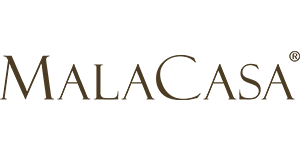Table Setting Mistakes to Avoid: A Beginner's Guide to Proper Place Settings
Navigation
- Common dinnerware placement mistakes and their solutions
- Improper silverware setting
- Improper glassware setting
- Overcrowded tabletops
- Incorrect tablecloth
- Pictorial demonstration of proper table setting
- Mnemonics to remember confusing dinnerware items
- Reasons behind improper settings
- Concluding words
Avoid the typical table setting mistakes to make your dinner a worthwhile experience. Let's explore how to develop a table properly with all the utensils in the right places and with correct directions. From picking the proper glassware to perfecting the tablecloth setting, this guide will eradicate all your table-setting mistakes.
Do you like hosting dinners? Whether you host dinner parties often or not, making mistakes while setting tables is common. For example, a standard fork, knife, and spoon aren't always necessary.
You are not required to place a spoon on the table for spaghetti. Neglecting these requirements leads to improper table settings, compromising the overall dining experience.
In this guide, we will delve into some common table-setting mistakes along with their potential solutions. Stick to this guide until the end to learn the proper table setting.
Common dinnerware placement mistakes and their solutions
Improper silverware setting
Utensils hold prime importance at the dining table. You need to be very particular about their orientation and quantity, which should align with the dishes you're serving. A standard setting typically includes one fork and one knife.
Below are some common table-setting mistakes when it comes to placing the utensils along with their required solutions:
Knives in the wrong direction
It is a widespread mistake to place the knife in the wrong direction. You need to remember that the knife blade must always face the plate.
Utensils on the wrong side
People often place utensils on the wrong side. You need to learn the proper setting of utensils on your dining table. It is a general norm to place the fork on the left and the knife on the right side.
Excessive cutlery
Don't clutter the table with unnecessary utensils. If you're serving only ice cream, for example, a spoon alone suffices.
Improper glassware setting
While placing the drinking glasses at the dining table, ensure they match what you serve. You must know different types of glassware and the visible differences in their appearance.
Let's look at some of the most common types of glasses based on the nature of the drink you offer:
Water and tea glass
These glasses usually have a shorter stem with larger drinking vessels. Match the glass to the drink to avoid awkward situations, like serving tea in a wine glass.
White vs. red wine glass
Make sure you select the correct wine glass. The red wine glasses are broader, while the white ones are thinner.
Unnecessary glassware
Once you establish which glasses will be necessary to serve the meal, remove the unnecessary drinkware from the table (if any). Unnecessary drinkware will make your table look overcrowded, making it difficult for the guests to reach out for the dishes quickly.
Overcrowded tabletops
You only need to place those items at the dining table that your guests will need while enjoying their meal. Overcrowding the table with unnecessary items is never a good idea as it confuses the attendees. Reaching out to the dishes also becomes difficult, especially when the dining table is overcrowded with unnecessary items.
To avoid such a situation, only use the dishes you need to serve a specific course. Don't place unnecessary items just for the sake of presentation. For example, avoid adding salad plates or soup bowls if they're not needed. That is not the proper manner to set the dining table. Indeed, it is appealing for decoration purposes but not for food consumption.
Incorrect tablecloth
While using a tablecloth, make sure you have the cover in the right shape and size according to the measurements of your table. For example, a round table needs a round cover, while a square table must have a square-shaped cover.
Be particular about the length of the cover as well. The longer tablecloth is associated with formal gatherings, while a mid-size tablecloth is usually associated with more casual meetups.
You also need to be very particular about the color of the tablecloth. Avoid using bright linens; use natural colors like white or cream. Such colors are best suited for formal gatherings.
5. Oversized centerpieces
A large number of people make mistakes when it comes to arranging candles or flowers on the dining table. Ensure the candle or flower arrangement doesn't block the guest's view. They should be short or large enough to maintain eye contact without interruption.
Pictorial demonstration of proper table setting
You need to consider this table setup if you plan to host a formal or an informal gathering. Avoid making mistakes and use the table layout as shown in the picture. Do not overcrowd the table with unnecessary items. Let the guests enjoy the meal without any hassle.

Mnemonics to remember confusing dinnerware items
- b and d: Allow the back side of your left hand to face you, align the tip of the forefinger with the tip of the thumb, and notice the ring made. After that, unbend the rest of your fingers. Do this process again with your right hand. Doing so will shape your left hand like a small 'b' while your right hand will look like a small 'd'. Here, b means bread, and d means drink. It shows that your bread plate must be on the left while the drinks must be on the right.
- BMW: Here, b means bread, m means meal, and w means water. Bread must be placed on the left, meal in the center, and water on the right side of your setting.
- Do remember the mnemonic FORKS:
- F stands for forks while the O for plates: As the F lies on the left of O, forks must be placed at the left of the plates.
- R is for remaining utensils: R serves as a reminder that the remaining utensils, i.e., k and s, must be placed on the right side.
- K means knife: Knives must be placed on the right side of your table setting.
- S means spoon: Spoon must be placed at the knife's right.
Reasons behind improper settings
Improper table settings can occur for a various number of reasons. Some of the most typical reasons are:
Lack of knowledge: Many people don't know the proper table setting. They need an education in table etiquette.
Cultural differences: Different cultures have different norms when setting a table. What might be expected in one culture can be unacceptable in another.
Rushed preparations: Last-minute preparations might cause the host to rush through the table-setting process. For example, the host might not follow the BMW rule and end up serving bread on the right side and water on the left.
Educating yourself with proper table-setting etiquette and norms is essential to avoid such mistakes.
Concluding words
This guide has highlighted some of the most common mistakes people make while setting the table for dinner. Along with this, we have also highlighted the effective ways to set the table properly.
Don't rush the process. Don't engage in last-minute preparations. Take a proper time. Learn table-setting etiquette and norms. Don't overcrowd the table and make the arrangements based on the nature of the gathering.










Leave a comment